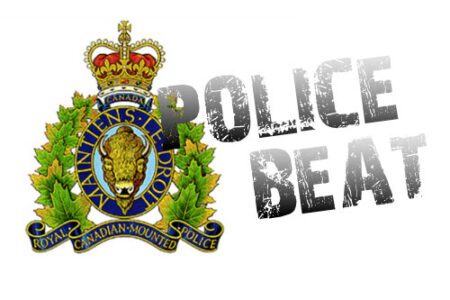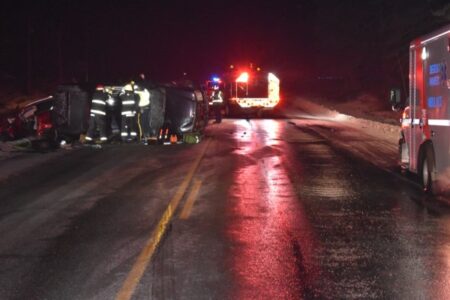Police look to target bigger fish this year: detachment commander
The city’s police will be going after number one this year.
The Grand Forks RCMP has served notice that they will be making it apriority this year to tackle the city’s biggest issue: property crime.
It should be no surprise that the biggest issue in Grand Forks isproperty crime related to drug use and abuse, said Grand Forks detachment commander Sgt. Jim Fenske in his annual report to city council.
There was a spike in property crime in the area — overall propertycrime offences were up 16 per cent last year from 2016 — prompting police to focus on charging the prolific and problematic offenders.
Property crime instances rose from 119 to 138 last year.
“In 2018 we are planning to focus on the people who are committing theproperty crime,” Sgt. Fenske said.
“Our efforts in pursuing prolificoffenders and known property crime offenders will continue.”
But it won’t be easy despite the detachment’s resolve, Sgt. Fenske explained.
“The most crippling thing in the community is a lack of addictiontreatment services, substance abuse and mental health services,” he pointed out.
The police continually see people who are dealt with in the criminaljustice system who could have been more appropriately dealt with through social service and the health system instead.
“I have said many times that this is a social issue,” Sgt. Fenske saidabout property crime. “You cannot arrest your way through a social issue. This requires a multi-agency approach to make it better. Some of it falls on the police, some of it doesn’t.”
In the interests of a multi-faceted approach the RCMP will continue toliaise with agencies in the community such as Interior Health, probation, Ministry of Children and Families and Mental Health.
The other major objective for 2018 is to “continue efforts towardsidentifying and prosecuting methamphetamine and fentanyl dealers,” said Sgt. Fenske.
Extra officer not on books
Although needed and a case warranted, the regional detachment likelywon’t be adding another officer this year. Sgt. Fenske had prepared and forwarded a detailed business case requesting an extra constable be added to Grand Forks detachment.
The total cost to add a member is $249,000, while the annual cost of a constable is roughly $161,000.
“The last I heard from the ask is zero. It’s above my head to makethat decision,” said Sgt. Fenske. “We’ve done our business case and … (although) the city was supposed to get one member, no one is getting anything.”
Resource staffing shortages are being offset by reserve constables, headded. Currently the detachment is down three out of eight constables (37 per cent). In May that number is supposed to change to two out of eight.
But Grand Forks is not the only detachment in this predicament, Sgt.Fenske explained. Other precincts in similar size areas are having the same problems.
However, Sgt. Fenske prepared a business case and was successful inadding an additional police vehicle and two UTV’s (side-by-sides) to the Grand Forks detachment.
He explained that due to the new safety regulations in regards tofentanyl drug exhibits the Grand Forks detachment has an Ion scanner and a fume hood (this equipment costs $75,000).
“The costs for this were paid by the province due to our fundingformula,” said Sgt. Fenske.
Looking further afield
A police presence in neighbouring Christina Lake during the summermonths was again viewed as a positive move.
With assistance and funding granted from the Regional District ofKootenay Boundary a reserve constable was deployed to Christina Lake for the months of July and August. “This unique initiative continues
to vastly increase presence on the water at Christina Lake with over 121 files generated for vessel checks and infractions in 2017,” said Sgt. Fenske in his report.
There were also 10 charges laid under Small Vessels Regulations, withone impaired operations of a vessel charge pursued criminally.
“Overall statistics showed minimal changes in criminal activity duringthe summer months as this deployment is maintaining the decreases previously attained,” Sgt. Fenske said.
Crime statistics and calls for service
Overall calls for police services were up 12 per cent in 2017.
Some of the increase can be attributed to an increasing amount ofcriminal activity and some can be attributed to file scoring as people were encouraged to report crime and provide evidence for charges, said Sgt. Fenske.
“This resulted in an increase in crime statistics, especially propertycrime,” he said.
Overall criminal offences were up seven per cent from 2016.
These increases are attributable to several factors. The predominantfactors were;
- Police resources were diminished from up to 50 per cent almost the entire year. Approximately 370 hours of policing were lost to the 2017 provincial interface fire deployments;
- An increased amount of the travelling criminal element (almost all detachments along Highway 3 had similar increases);
- In increase in mental health-related calls for service kept officers from proactive police work;
- Members encouraged businesses and employees to provide evidence to support charges instead of just requesting that police temporarily fix the problem;
- Enforcement of bail, probation and conditional sentence orders has led to apprehension of prolific and problematic offenders.
— Source: RCMP annual report

























Comments